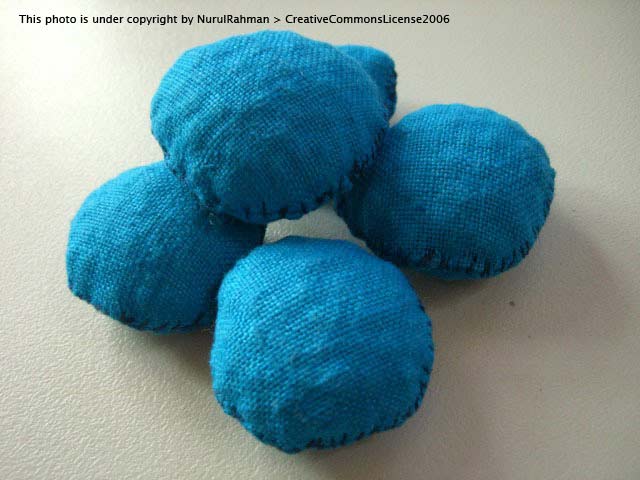This work is licensed under a Creative Commons Attribution-NonCommercial-NoDerivs 2.5 License.
–>I had a discussion with Laurene (my supervisor) about some of Malaysian traditional games last week (13 July 2006), then to make it more real, I actually make one, just to show her what it’s like but not from stone because I could not find the perfect stone and I think it’s quite dangerous to play with stone (the selected stone has to be round and light), so I make it from lentil and textile. Belows are my creation, a transformation from traditional to modern design.
–>I thought that she will find it different and unusual, but instead she knows these games, not by the material, but by action. Althought she played this game with different material. Thats how she notice it has similar as the game she use to play in her childhood time.
One of the question she asked that interest me is :
Is these games can be recognise as a global game? Does it reach a global level?
I think it has different names but it does have similar action on how to play.
1.Batu Seremban or Batu Tujuh (seven stones) in Malaysia
2. Jacks in Australia and New Zealand
3. Knucklebones in Egypt and in Europe
As I notice with all these games it usually played by girls not boys. Perhaps because it has the graceful action, the posture, the technique and the action by it self just perfect for girls in the olden days.
I’m still in the working progress researching this topic. And my questions is:
Can we recognised Batu Seremban as one of Malaysian Cultural Identity, although it has similarity with other traditional games in other country?
Where these games come from? Which roots? Does it has a connection with the “World War”?
If anyone have any comment about this topic please do make some comment.




